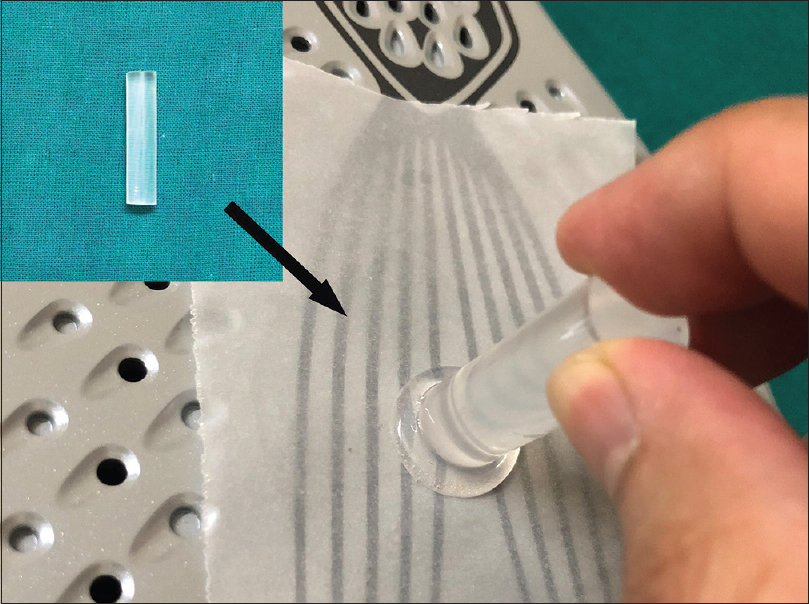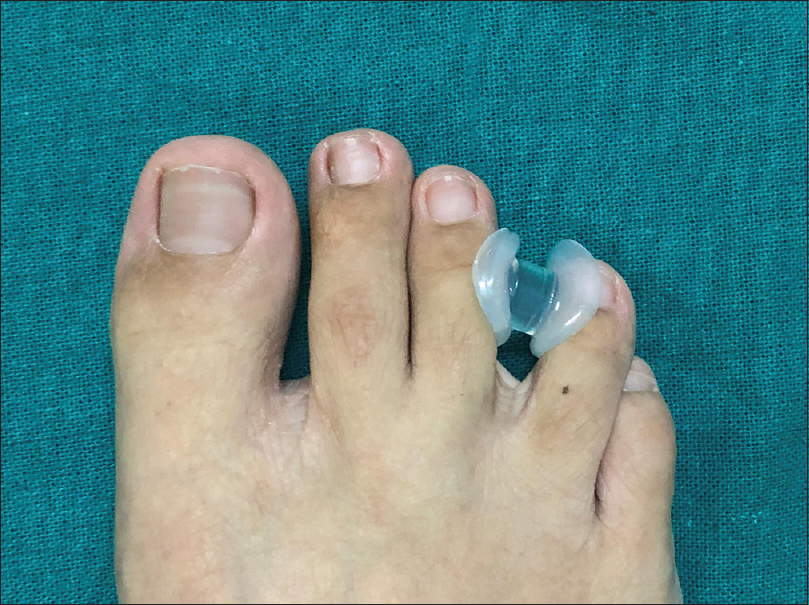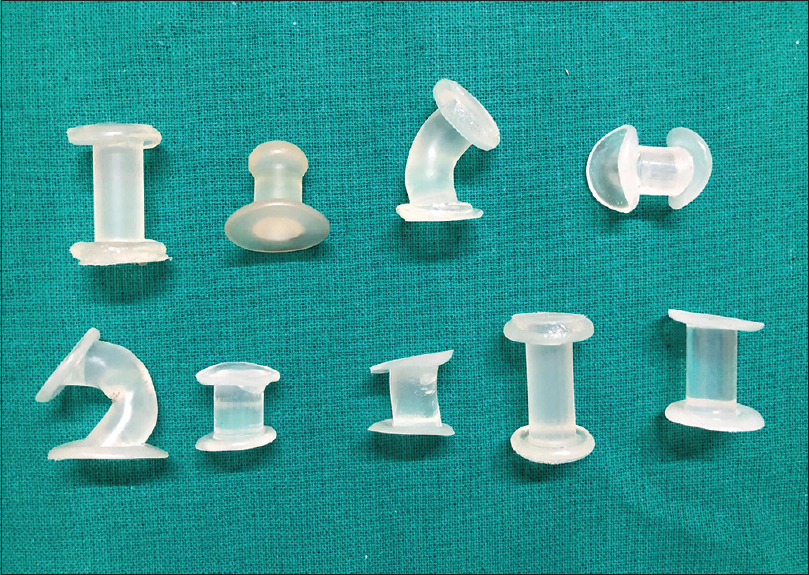Translate this page into:
Assembling a customized toe separator for the management of interdigital dermatoses
2 Sun Skin Clinic, Ambala, Haryana, India
3 Department of Medicine, Maharishi Markandeshwar Institute of Medical Sciences and Research, MMDU, Ambala, Haryana, India
Correspondence Address:
Sanjeev Gupta
#B2, MM Medical College Residential Campus, MMDU, Mullana, Ambala, Haryana
India
| How to cite this article: Gupta S, Jangra RS, Gupta SS, Gujrathi AV, Gupta S. Assembling a customized toe separator for the management of interdigital dermatoses. Indian J Dermatol Venereol Leprol 2020;86:750-751 |
Problem
The mainstay of treatment for interdigital infections is to keep the web spaces dry, which is achieved by keeping the toes separated.[1] However, this is particularly difficult in patients with obesity, arthritis, diabetes and other orthopedic problems. Some authors have suggested the role of a coiled wire loop as a toe-separator, but this is not always comfortable or user-friendly.[2] Toe separators are also available online; but their availability, higher cost and fixed size/shape is an issue.
Solution
We have tried to overcome this problem by making a customized toe separator at home or clinic, using a hot glue stick which is a common stationery item that is readily available. They are usually made of silicone and rubber which are inert, non-irritating and are least allergenic [Figure - 1]. A small piece of stick was cut as per the required size and molded by pressing it on a hot iron (or any hot surface) to obtain flattened ends on both sides. A small piece of butter paper was placed in between the glue stick and iron to avoid sticking [Figure - 1]. This device acts as a toe separator. It can be further molded to get any desired shape so that it snugly fits in between the toes without causing discomfort [Figure - 2] and [Figure - 3]. Furthermore, the use of this device can be continuous or intermittent as per the patient's comfort. It can also be used along with loose-fitting footwear. We have used this device over a period of 4 months for many patients in our day-to-day practice. This tool is customizable, economical, comfortable, durable, re-usable, washable, easily available and does not require much expertise to assemble [Video 1].
 |
| Figure 1: Small piece of hot glue stick being molded on a hot iron |
 |
| Figure 2: Glue stick mould in use by a patient |
 |
| Figure 3: Different molds prepared from a glue stick |
Declaration of patient consent
The authors certify that they have obtained all appropriate patient consent forms. In the form, the patients have given their consent for their images and other clinical information to be reported in the journal. The patients understand that their names and initials will not be published and due efforts will be made to conceal their identity but anonymity cannot be guaranteed.
Financial support and sponsorship
Nil.
Conflicts of interest
There are no conflicts of interest.
| 1. |
Janniger CK, Schwartz RA, Szepietowski JC, Reich A. Intertrigo and common secondary skin infections. Am Fam Physician 2005;72:833-8.
[Google Scholar]
|
| 2. |
Vedamurthy M, Ashique KT, Moorthy A, Samuel S. An innovative approach for separating the toes to manage interdigitaldermatoses. J Am Acad Dermatol 2016;75:e189-90.
[Google Scholar]
|
Fulltext Views
4,487
PDF downloads
1,533





